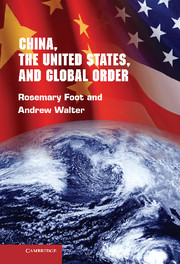3 - Macroeconomic Policy Surveillance
Published online by Cambridge University Press: 05 June 2012
Summary
Macroeconomic policy “surveillance,” as James Boughton (2001: 67) points out, did not become part of the formal language of the International Monetary Fund until the Second Amendment of its Articles of Agreement in 1977. The revised Article IV (Section 3a) set out two distinctive forms of policy surveillance: “multilateral surveillance,” requiring the Fund to “oversee the international monetary system to ensure its effective operation,” and “bilateral surveillance,” requiring it to “oversee the compliance of each member with its obligations under Article IV, Section 1.” Article IV is concerned with member state “obligations regarding exchange arrangements,” though it also contains general language on each member state’s obligations to “endeavor to direct its economic and financial policies toward the objective of fostering orderly economic growth with reasonable price stability.” The IMF’s general surveillance function thus stems from an assumed mutual responsibility to collaborate in the setting of macroeconomic policies, with, as we shall see, particular emphasis on countries’ exchange rate policy obligations (IMF 2006c). The primary objective of such surveillance “is, through thorough analysis, candid discussions, and a peer-review mechanism, to promote the domestic and external stability of members’ economies and thereby the stability of the international monetary system as a whole” (IMF 2009d: 3).
As a normative principle, international macroeconomic surveillance can be traced back to the system established at Bretton Woods in 1944, and it developed over the following decades. It was founded on the recognition, borne of the painful experiences of the 1920s and 1930s, that global economic stability required a minimal degree of consistency in the macroeconomic policy choices of (at least) the most important countries. This was most obvious in the area of exchange rate policy, when in the wake of the breakdown of the restored international gold standard in the early 1930s a number of countries engaged in beggar-thy-neighbour currency devaluations that increased political tension and further reduced international trade. By the time of the Bretton Woods agreement, there was also growing acceptance by the major industrialized democracies of the newer Keynesian idea that fiscal and monetary policy should be oriented towards the stabilization of the domestic economy. This new policy priority raised difficult questions about how domestic macroeconomic activism was to be reconciled with the goals of global monetary order and open international trade. IMF surveillance was meant to reconcile these domestic and external priorities by fostering sufficient policy consistency among countries to promote stability of exchange rates and to prevent the reemergence of large international payments imbalances that had proven such a fatal flaw of the system in the 1920s (James 1996: Chapter 1).
- Type
- Chapter
- Information
- China, the United States, and Global Order , pp. 79 - 132Publisher: Cambridge University PressPrint publication year: 2010

